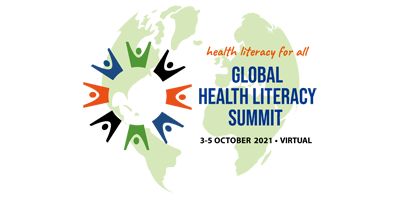Abstract Preview
Abstract
|
Title Association of health literacy with perceived susceptibility to colorectal cancer, and benefits and barriers of screening in Malaysia |
|
Type Poster Presentation Only |
|
Theme Global Health Literacy Summit 2021 |
|
Topic Others |
Authors
|
Main Author Sanpagavalli Doraimuthu1 |
|
Presenting Author Sanpagavalli Doraimuthu1 |
|
Co-Author Tin Tin Su2 Maznah Dahlui3 Nor Saleha Ibrahim Tamin5 Desiree Schliemann4 michael donnelly4 Saunthari Somasundaram6 |
Authors' Institution
|
Department / Institution / Country 1. Centre for Population Health (CePH), Department of Social and Preventive Medicine / University Malaya / Malaysia1 South East Asia Community Observatory (SEACO) & Global Public Health, Jeffery Cheah School of Medicine and Health Sciences / Monash University Malaysia / Malaysia2 Department of Health Policy and Management / University Airlangga / Indonesia3 Centre for Public Health and UKCRC Centre of Excellence for Public Health / Queen’s University Belfast / United Kingdom4 Non Communicable Disease / Ministry Of health / Malaysia5 National Cancer Society / National Cancer Society, Kuala Lumpur, Malaysia / Malaysia6 |
|
Abstract Content (abstracts should be written in Size 11 font, Arial font style)
Introduction Colorectal cancer (CRC) is one of the top three cancer diagnosed among Malaysians. Early detection of CRC is likely to improve survival rates. However, low rates of CRC screening in the population are often associated with various factors including erroneous health beliefs. Aim To determine the level of health beliefs (perceived susceptibility, benefit, and barrier) of CRC screening and the association with health literacy (HL). Methods A survey was conducted among randomly selected community-dwelling adults in Rawang, a suburban area in Selangor state, Malaysia from January to March 2018. The questionnaire assessed the sociodemographic, HL level by using 6 items European HL questionnaire and health beliefs by using Champion’s Health Belief Model scale. A multivariate analysis was performed to determine the hierarchical association of HL and sociodemographic factors with health beliefs. Results Analysis was carried out on 954 respondents (54.1% Malays, 11.5% Chinese, 27.7% Indians, and 6.7% others). The mean score for general HL was 2.88 (0.60), perceived susceptibility to CRC was 2.44 (0.81), perceived benefit and barrier of CRC screening was 3.59 (0.64) and 2.53 (0.50), respectively. The Hierarchical Generalized Linear Model revealed that non-Malaysians (p = 0.01, 95% CI: -2.26 - -0.30) and Indians (p < 0.001, 95% CI: -2.04 - -1.26) have significantly lower perceived susceptibility to CRC. Chinese (p = 0.02, 95% CI: 0.13 – 1.25) and Indian (p = 0.03, 95% CI: 0.03 – 0.82) showed significantly lower perceived benefits of screening compared to Malays. Women had higher perceived barriers to screening (p = 0.02, 95% CI: 0.16 – 2.08). Respondents with tertiary education qualification elucidated significantly higher perceived susceptibility (p = 0.047, 95% CI: 0.01 – 1.41) and lower perceived barrier (p = 007, 95% CI: -4.42 - -0.68) compared to those with no formal education. Respondents with sufficient HL (p = 0.01, 95% CI: 0.09 – 0.79) and unemployed (p = 0.02, 95% CI: 0.09 – 0.83) showed significantly higher perceived benefit of screening. Conclusion HL has a promising potential to improve belief and behavior about CRC screening. Implementing HL improving interventions will further effect on enhancing CRC screening coverage in Malaysia.
|
|
Other Topics Preferences(Maximum of two topics only and please note that the Program Committee reserves the right to decide on the final presentation format.) - |
Requires Audio or Video system for Presentation?: No
